The Pace of Change and Trust
When the banking crisis in 2009 caused trust levels throughout the world to plummet to new depths, I believed that we would be in a far better place now six years on. I was wrong.
Trust has now receded back to these low figures but with the key missing factor that there has been no major recession. There have of course been major catalysts of disruption (Ebola, the Sony hack and the FX trading scandal), but even these don’t clearly demonstrate a reason why trust levels are so low.
There are many reasons – but one of the contributing facts that leapt out and shocked me, thanks to Edelman Berland research that forms the Edelman Trust Barometer, is due to innovation.

As Edelman Berland’s chief innovation officer, the fact that innovation, the saviour in my mind that generates growth and value, could even be mentioned in the same sentence as something negative shocked me. How can innovation cause problems? When a new technology app helps people to stay fit or keep in touch with their families cheaper and easier – how can this be a problem?
The problem isn’t with innovation but instead with its pace. It’s too quick and often without control.
A few key facts:
- Twice as many people think innovation is too fast
- Three times as many people think that innovation is only about profit and greed but not for worldly benefits
- Four times as many people believe that innovation needs government regulation but fear government cannot do it
This great discomfort with the pace of innovation (albeit less felt by Millennials) is most pronounced in the developed world where great leaps of “improvement” have created fracking and GMO.
Pandora’s box is open and innovation has flooded out a maddening pace.
But, the speed of change was not mirrored by the control that should map onto it. People want to be able to engage, comment and opt out but frequently can’t. Life is not “Field of Dreams” – just because we can build it, doesn’t mean people want it. If a customer can’t see the link between a new innovated product and their problem then the brand has a problem too. Innovation doesn’t start and stop with the “what is the new product?” but instead needs the foundational support of “how” and “why” too. Trust is an essential ingredient to innovation. Where there is high trust in institutions, the trust in innovations is often higher. And where there is an understanding of benefits and that an innovation is borne not out of a firm’s desire to gain profit but to be of value, there is higher trust in innovation, or Trusted Innovation, as Edelman calls it.

This is where Edelman and communication marketing fits in. Only through dialogue, engagement and participation can brands link reputation and marketing. Advertising will only broadcast a message. Innovation will always be needed but without a purpose it will be seen as a negative solution.
Filed under: analyst relations | Leave a Comment
Filed under: social media | Leave a Comment
Tags: edelman, influence, social media, tweetlevel, twitter
Welcome to the new TweetLevel! – In our biggest update since the first version of the product was launched four years ago, we have focused on delivering you unprecedented Twitter intelligence in a more visual and user-friendly way, at no cost that gives you the real time, actionable insight you need to engage in Twitter most effectively.
With just one click, you can analyse who are the most influential tweeters on any topic, or take a deeper dive into what makes those influentials tick.
What’s different about TweetLevel
This tool was created by PR professionals at Edelman for PR and marketing professionals. This means that we know what information is needed to make sound business decisions. We understand that influence is not the same as popularity, that idea starters aren’t the same as idea curators or amplifiers, and that someone can be influential even if he or she has only a few followers. What is most important is how his or her message spreads across the twittersphere. TweetLevel recognises that influence without context is irrelevant and that stand-alone scores mean nothing.
What TweetLevel provides is an easy way to navigate influence on Twitter.
Individual Analytics at-a-glance
 Word Cloud
Word Cloud
Understand what are the issues people are talking about when discussing a subject. When analysing an individual, identify what is important to them.
Time and Date
Understand what day of the week and what time of the day the user engages on twitter.
Not all influencers are the same. Some are important because they are popular, some because they link conversations together. TweetLevel classifies individuals according to their influence type
Key Facts
At a glance key facts showing engagement, demand and reach metrics
Topic Analytics at-a-glance
How much are people tweeting about a certain topic compared to others. Analyse results from the past 30 days or deep dive to find out what happened in any specific time period.
Search by date/language/topic/link
You can now specify results only on the language you want, a specific phrase, hashtag or link.
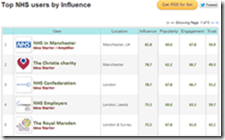 Most influential tweeters by topic
Most influential tweeters by topic
TweetLevel identifies which people are the most relevant about a subject and then calculates their influence score and influence type.
 Understand Share of Voice and Shared Web Links
Understand Share of Voice and Shared Web Links
This tool will also allow you to understand which users have the largest share of voice and which web links are shared the most frequently
Any questions?
We’re here to help, simply mail tweetlevel@edelman.com or @jonnybentwood and we’ll answer any queries you have
Filed under: social media | Leave a Comment
Earlier this week I took part in an engaging panel discussion at Brighttalk with Eamonn Conway of BrightTalk, Linlay Gooden from Green Screen On and Doug Kesler from Velocity Partners.
Specific areas that we covered include:
- Why do you think there is a growth in B2B video?
- What memorable B2C video can you think of – can you think of any B2B videos?
- Are B2B videos boring?
- How creative should organisations be when creating B2B video content?
- How should one promote B2B videos?
- Is there such a thing as viral B2B content?
- What’s more important – the video or where the video is embedded?
- How can marketers use the engagement data of videos?
What’s your view of B2B video – would love to hear your opinion.
Filed under: social media | Leave a Comment
Tags: b2b, britghttalk, marketing, video, youtube
Lifting the lid on Twitter’s big taboo

I recently read with alarm in the Wall Street Journal about the truly distressing plight of increasing numbers of marketing executives:
Melanie Notkin, founder of SavvyAuntie.com Inc. says: “I can’t ignore them,” Ms. Notkin says of her more than 19,800 Twitter followers. As a small-business owner, Ms. Notkin says she doesn’t take long vacations. But even on a weekend at the beach, she warns those around her of her need to check her phone.
“We need to appear active,” Douglas Quint, co-founder of Big Gay Ice Cream, says. “We want to appear in people’s Twitter feeds once or twice a day.”
On the eve of her trip to the Southwest, Eva Chen, beauty director at Teen Vogue, sent a tweet: “Huzzah! I’m officially on vacation!” Over the next five days, while driving through Arizona, she tweeted more than 120 times, checked-in more than a dozen times on Foursquare and posted more than 30 photos to Instagram.
In the case of the prolific Ms Chen, she may as well on be on vacation at all . . . . . . 120 tweets in 5 days; in addition to the Instagram posts and Foursquare check-ins. It sounds rather like a day in the office to me!
The need to ‘carry the brand’ throughout their waking moments has forced these executives to – literally – become slaves to Twitter. According to the WSJ: “the most compelling social-media handles, whether a brand, a small business or a person inside a larger organization, usually are the work of one individual, with a unique personality and voice . . .”
I’m all in favour of living the brand, but encapsulating into the identity of a single person has its downside. Quite apart from the risk to brand equity (and followers) should a ‘power Tweeter’ leave the organization, I wonder how genuinely authentic such communications can really be. Most people do not see the World the optic of a single brand, experiences are made up of a variety of insights, prejudices, tastes, opinions and loyalties; some of them rational many of them completely irrational.
In fact, that’s what makes Twitter so engaging – people share literally what’s on their mind, what excites, stimulates, amuses, annoys and means something to them. Twitter enables me to catch up on the state of the European bond market (http://t.co/LsrIeekH) and check out the Onion’s latest take on Jennifer Aniston’s new beau (http://t.co/gyxBOD53) in many cases retweeted from the same person! Twitter becomes far less compelling if we see a corporate agenda crudely concealed behind the feed; worst of all it becomes predictable.
Returning to Twitter’s modern slaves, I would encourage them to – literally – get out more, experience life, feelings, emotions, doubt, uncertainty . . . and express them online through a personal account. They are sure to find life outside the brand liberating . . . . or at least their friends and family might appreciate it.
WSJ again:
‘For most heavy tweeters, it isn’t a burden, or even a work obligation, to stay “on brand” and connected. It’s a choice. “I don’t find it to be an intrusion of my vacation,” says Aliza Licht, senior vice president of global communications for Donna Karan Co., who has amassed more than 413,600 followers on her @DKNY Twitter handle.
More revealingly she adds that she also checks work email while on vacation. “It’s not comfortable for me, my personality, to be away,” she says. Her husband and young children are “accepting” of her social-media connectivity, she says. Sometimes her husband suggests tweets.’
“Accepting” of her tweeting . . . sometimes her husband even suggests tweets . . . . ?!” Hmm I’m not sure I’m convinced. When I had the temerity to pick up the BlackBerry during a recent vacation to share an amusing story about a head of state suggesting that hitting a rugby referee with a rock could be justified ‘under certain circumstances’ (http://t.co/zhm3HOLd), my wife’s reaction could hardly be described as ‘brand compliant’ (unless the brand in question included surgery without anesthetic in its portfolio). Her perspective is that vacations are there for a purpose and that purpose does not include work (which she associated with my picking up the BlackBerry).
I believe that she is right – but in more ways than she realizes. For brands and brand ambassadors to be credible they need to reflect multiple experiences, opinions, points of view, insights . . . . most of all they need to include some element of spontaneity and surprise. A brand ambassador who never removes the corporate avatar from his or her online musings is missing out and . . . . ultimately, doing the brand in question a disservice.
So power tweeters of the world, use this summer’s vacations to remove the chains of brand compliance and express yourselves! United, we can put an end to this modern form of slavery!
Let me know what you think!
Guest post by: Roger Darashah
Filed under: social media | Leave a Comment
Tags: slavery, social media, twitter
A process cannot be understood by stopping it. Understanding must move with the flow of the process, must join it and flow with it.
..and yet the above quote from Frank Herbert is exactly what many people ignore when trying to understand who is influential on any given topic. Conversations are not fixed points in time but are dynamic and agile with different participants contributing throughout.
Why This is Important?
If people are trying to influence a conversation to ensure their message resonates throughout their target audience it is essential that they target the right people, at the right time in the right manner. Too often people only focus on who are the right people but haven’t access to the right tools to help with the later areas.
Working in tandem with Ramine Tinati from the the University of Southampton, we analysed multiple conversations via a unique tool called Flow140 for common trends. The results were astounding and has directly impacted the way I work.
In previous discussions, I have explained how:
influence is defined by how information flows in a conversation
As part of this, much of the focus has been on two of the primary personas within the topology of influence. The idea starter and the amplifier – however, what I have only recently realised in my own Eureka moment is that a forgotten but critical player is the curator needs to be engaged with. This person, often overlooked due to their relatively low popularity has proven to be a significant driver of influence.
When analysing the three types below, it is clear to see that as marketers we must adopt both technology tools and sociological profiling to help us interact with people. Idea starters start early in great detail but often do not engage when the conversation reaches maturity and amplifiers publish and move on. If we were to engage with these two types when a conversation has been established in the market for some time because we rightly understood that these two people were instrumental in making this happen, then we would be wasting our effort. Instead it is the local expert who maintains the conversation and enables it to grow.
Maturity of Conversation Flow via Influence
Taking the Gartner hype cycle concept, I have adapted this to the growing maturity of a conversation topic. As marketers, we need to identify at what stage of a conversation we are engaging in, so that we in turn can ensure that our limited time and focus is spent concentrating on the right people who have the greatest chance of influencing others.
Stage 1: Conversation Trigger
Regression analysis of conversations often point to a few individuals who initiate the concept. These ‘idea starters’ often collaborate with curators to refine the concept and amplifiers to help publicize their thoughts. Engagement with the idea starter via collaborative discussion holds the greatest opportunity to influence the conversation.
Key influencer: Idea Starter
Preferred Engagement Behaviour: Collaborative discussion
Stage 2: Peak of Concurrent Conversations
When an ‘amplifier’ becomes interested in a conversation, it has the opportunity to reverberate around communities. With a large audience, an amplifier’s voice is disproportionately loud and for this reason has often been the target of many influence campaigns. Engagement with group has the greatest chance of success provided a relationship exists. However, this opportunity is often extremely hard to achieve and hence marketers have instead opted for influencing the influencers of this group (i.e. idea starters) or using paid methods (e.g. advertorials). Nevertheless, what cannot be doubted is that when an amplifier publicises content, it generates a huge volume of conversation.
Key influencer: Amplifier
Preferred Engagement Behaviour: Pre-packaged content that is easy to reproduce
Stage 3: Trough of Early Adoption
As any blogger will tell you, after the initial excitement of a meme, there comes a quick and sudden lull in conversation volume. What is most apparent is that the early catalysts for discussions no longer actively participate in the conversation. This is a crucial stage as it is here where the traditional key influencers of idea starters and amplifiers make way for the curator. Curators are the niche experts who are known within their circle as the go-to-person about a niche area. They may not have a huge number of followers but they maintain the conversation when others have left.
Key influencer: Curator
Preferred Engagement Behaviour: Q&A, scenario discussion
Stage 4: Slope of Enlightenment
For an idea to manifest, it takes time and evidence-based discussion to prove that it is an idea worth following. It is at this stage that once again we see the curator as being a focal point in idea adoption.
Stage 5: Plateau of Mainstream Adoption
You may never get as high a degree of volume of discussion as with the Peak of Concurrent Conversations but it is at this final stage where key commentators are dominating the conversation. Adoption of the idea is widespread with the initial idea starter and amplifier having progressed to other areas some time ago.
Proof of Theory – Flow140
In this video created with Flow140, you can see how idea starters start early in the conversation, amplifiers give it mass growth but it is the curators who make it last.
The Topology of Influence in Detail – idea starter, amplifier, curator, commentator and viewer
 Idea Starters – this small collective of people are the creative brains behind many of the thoughts and ideas that other people talk about. Even though they may not necessarily have a large audience themselves, their insightful opinions often flow and are repeated throughout conversations long after they have left. They are typically well connected to other idea starters (where they collaborate on thoughts) and amplifiers (who they often rely upon to spread their views). Idea starters tend to be well connected to curators and amplifiers.
Idea Starters – this small collective of people are the creative brains behind many of the thoughts and ideas that other people talk about. Even though they may not necessarily have a large audience themselves, their insightful opinions often flow and are repeated throughout conversations long after they have left. They are typically well connected to other idea starters (where they collaborate on thoughts) and amplifiers (who they often rely upon to spread their views). Idea starters tend to be well connected to curators and amplifiers.
Amplifiers – these people frequently have a large audience and following. Their expertise may be deep but often they rely upon other contacts to provide opinion to which they then let their readership know about. They often have professional or commercial motivations such as journalists or analysts but are also more often than not self-created experts and avid sharers of information. Their advantage and their burden is their huge number of followers they need to keep satisfied. This behaviour ensures that they need to receive pre-packaged content that they can easily repost, retweet or repurpose so that their audience does not diminish. Amplifiers are frequently well connected to idea starters as the source of their content.
Curators – this group though having a far smaller audience are perhaps one of the most influential groups. Long after the idea starter and amplifier have left a conversation, it is the curator that maintains discussion. This niche expert collates information about a specific topic and is frequently sought after for advice about this specific area. They often take part in discussions with idea starters and are avid readers of topic-specific amplifiers.
Commentators – these people individually have little influence. Their behaviour often resembles little more than adding a comment without contributing greatly to the conversation. Their influence should not be ignored but should instead be viewed as a collective to measure the trend of opinion around a subject. An interesting factor is that this group are often self-moderating – when negative comments are posted often these contributors will often intervene to correct inaccuracies or a unfounded negative views.
Viewers – In the conversation this invisible group who we call viewers don’t leave a foot print except through Google. Indeed it is through Google, and the impact of viewers on search results, that these other groups become influential and evolve their role within a conversation. Authority rests with the search patterns of those who simply observe in a democratic world.
Conclusion
In order to stand the greatest for marketers to influence a conversation, they must appreciate what maturity stage the conversation currently is at. Upon doing that they will need to target the most appropriate person from within the topology and engage with them according to their behavioural characteristics.
End note: We are currently beta-testing the next iteration of TweetLevel which will allow anyone to identify what type of influencer a tweeter is via its algorithm. If you would like a beta-access password, please contact @jonnybentwood
Filed under: social media | 1 Comment
Tags: amplifier, conversation flow, curator, edelman, idea starters, influence, topology of influence, tweetflow, tweetlevel
Social media week in London provided an excellent opportunity to analyse influence. Too often when there is a breaking story, I whish I could have turned back the clocks by a few days to see how the story originated and spread whilst focussing on who the key people were in the conversation and what they did to help propagate it.
This blog post will illustrate several key concepts that are unique to TweetLevel and Edelman.
- Conversation map analysis shouldn’t be conducted post event but through real time metrics allowing you to understand what time of engagement behaviour an influential person has. After all what’s the point of a static map when conversations aren’t the end result but a flow of information over time.
- The key players in a conversation are not just the most popular but those who start the ideas, spread and curate them. We call these people the new influentials.
- Timing is critical. This isn’t just about what time of the day they tweet, but when they take part in the conversation. For example many of the idea starters initiated the dialogue a few weeks before #smldn even started. As a marketer if I could know who these people were in advance, then it would have been the perfect opportunity to engage with them.
Dynamic conversation map
What we can learn from this..
- Idea starters engage early in the conversation (often weeks before the event)
- A good three weeks prior to the event starting the people who would eventually be the thought leaders in social media week has initiated the conversations around the topics they were going to be pushing. Not surprisingly they were doing their own service marketing.
- From an objective point of view, they hadn’t managed to engage a large number of other people into this dialogue as they were instead waiting until the event started.
- As a marketer I would if I was aiming to influence people, I would look to see who is engaging early and seek to interact then – if we wait till later then the conversation is too saturated to be heard.
Time jump conversation map
The following slide show takes you from 29 Jan where just a few people were discussing the event to a screen shot every few days up till the end of 17 Feb.
What I believe this shows you is that some of the key people in conversations are not the those who normally jump out. Namely, the person who creates the ideas or the person who has the huge audience that helps spread them. It is in fact the “yellow dots” in the above images. These influentials are curators – those who are niche experts and connected to idea starters and amplifiers. This group helps to link and grow conversations even though most tools in the market would ignore them {this is why TweetLevel puts a high focus on how information flows, its origin, connectedness and NOT just popularity]
Taking another example from the WC3 event last year, if you look at the final map you would hardly notice some of the key individuals who make this topic travel so far.
In this instance you may think that Tim Berners-Lee and Google Research were the key folks involved.
Instead what you can also find is that early in the dialogue an individual who has relatively few followers is instrumental in making the conversation spread.
Timing is everything
 if you also analyse when people tweeted about the event, the amount conversation does closely mirror the actual main conference itself. Nevertheless, the thousand tweets in advance were as we already know populated by who we would know to be the idea starters and leaders of the event.
if you also analyse when people tweeted about the event, the amount conversation does closely mirror the actual main conference itself. Nevertheless, the thousand tweets in advance were as we already know populated by who we would know to be the idea starters and leaders of the event.
The second analysis focussed on the time in the day when the tweets were made. These also coincided with keynotes and social gatherings post event.
Quoting a favourite adage of mine, we need to fish where the fish are. If we hope to have any chance of engaging with the people that count, we need to make sure we engage at the right time.
Who is influential – link to top influencers on TweetLevel for #smwldn
What you can clearly see is that this list isn’t biased to the most popular but instead draws its focus on:
- Context
- How important they are to the flow of information
- Timing
What does this mean?
As we continually look to identify and understand influence, we must instead look to understand engagement behaviours. This means looking to engage early in the conversation with the people that count knowing that they will be the idea starters as the milestone continues. We need to also build relationships with the curators, knowing that even though they have a limited audience, their connections are vital to enable a conversation to flow.
Filed under: analyst relations | 5 Comments
Tags: edelman, influence, influentials, social media week
To provide an added balance, Jeremiah Owyang has contributed the view from the analyst’s perspective…
To download these images go to Flickr for Analyst Relations (from @jonnybentwood) or Analyst (from @jowyang)
Filed under: analyst relations | 6 Comments
Tags: analyst relations, what i do
RIP: the social media influencer
This is the sermon to commiserate the death of the influencer.
This expert who would magically solve problems by regurgitating a tweet or a blog post. This magus who cared little for context, community or conversation but whose narcissism for their own popularity made them believe their power of their own word.
But on this sad day, we welcome a newcomer to our fold. This person, this new influential can finally be identified and engaged with in a way that is appropriate to their behavioural characteristics.
RIP the social media influencer and long live the new influential.
To listen to the audio to go with this presentation, please visit the BrighTalk page
Filed under: influence, social media | 4 Comments
Tags: influence, influentials, social media, topology of influence






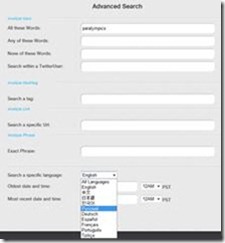


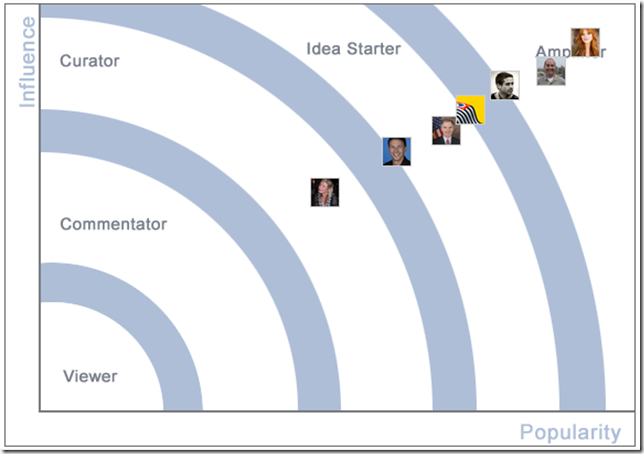
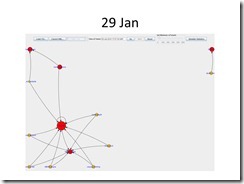


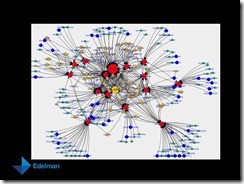


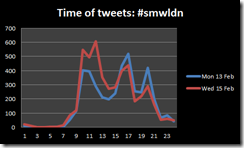






 RSS feed
RSS feed
The Influence Tipping Point
We are at a wonderful tipping point in the business of influence analytics. For the first time ever, sociology and technology are colliding enabling us to identify the influence type of an individual by the patterns of their online behaviour.
Why understanding influence type is important?
In order for PR and marketing professionals to enable their message to resonate as successfully as possible they must engage with key influential people in a manner that complements them. For successful engagement, any interaction must follow three key tenants:
All these points are included in the most recent major update to TweetLevel, a GPS for navigating twitter influence.
However, it is the last aspect that propels TweetLevel to a whole new dimension. TweetLevel analyses the twitter behaviour of individuals to determine their influence type and segments them into one of five classifications. Of course having an influence type in itself means nothing, it is learning from this so engagement with this individual can be as effective as possible.
What do the different categories mean?
Idea Starters
This small collective of people are the creative brains behind many of the thoughts and ideas that other people talk about. Even though they may not necessarily have a large audience themselves, their insightful opinions often flow and are repeated throughout conversations long after they have left. They are typically well connected to other idea starters (where they collaborate on thoughts) and amplifiers (who they often rely upon to spread their views). Idea starters tend to be well connected to curators and amplifiers.
Amplifiers
These people frequently have a large audience and following. Their expertise may be deep but often they rely upon other contacts to provide opinion to which they then let their readership know about. They often have professional or commercial motivations such as journalists or analysts but are also more often than not self-created experts and avid sharers of information. Their advantage and their burden is their huge number of followers they need to keep satisfied. This behaviour ensures that they need to receive pre-packaged content that they can easily repost, retweet or repurpose so that their audience does not diminish. Amplifiers are frequently well connected to idea starters as the source of their content.
Curators
This group though having a far smaller audience are perhaps one of the most influential groups. Long after the idea starter and amplifier have left a conversation, it is the curator that maintains discussion. This niche expert collates information about a specific topic and is frequently sought after for advice about this specific area. They often take part in discussions with idea starters and are avid readers of topic-specific amplifiers.
Commentators
These people individually have little influence. Their behaviour often resembles little more than adding a comment without contributing greatly to the conversation. Their influence should not be ignored but should instead be viewed as a collective to measure the trend of opinion around a subject. An interesting factor is that this group are often self-moderating – when negative comments are posted often these contributors will often intervene to correct inaccuracies or a unfounded negative views.
Viewers
In the conversation this invisible group who we call viewers don’t leave a foot print except through Google. Indeed it is through Google, and the impact of viewers on search results, that these other groups become influential and evolve their role within a conversation. Authority rests with the search patterns of those who simply observe in a democratic world.
So what?
With a constant pressure on PR and marketing professionals to deliver great success with limited time and budget, ensuring that any engagement that occurs is targeted and effective is critical.
Filed under: analyst relations | Leave a Comment
Tags: amplifier, commentator, curator, edelman, idea starter, influence, topology of influence, tweetlevel, viewer